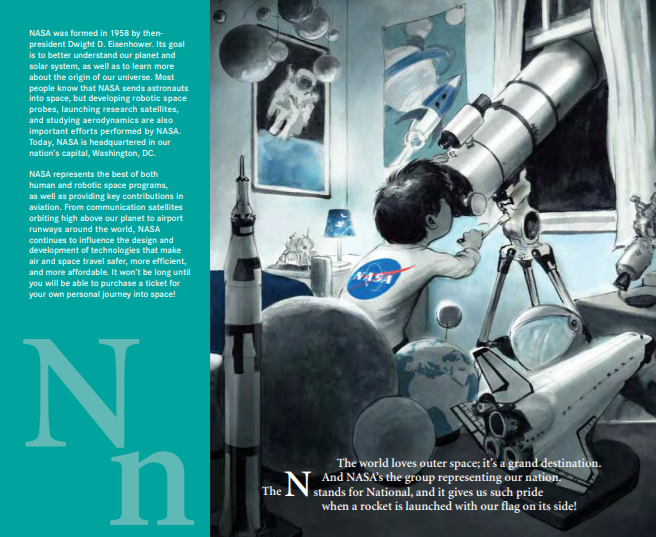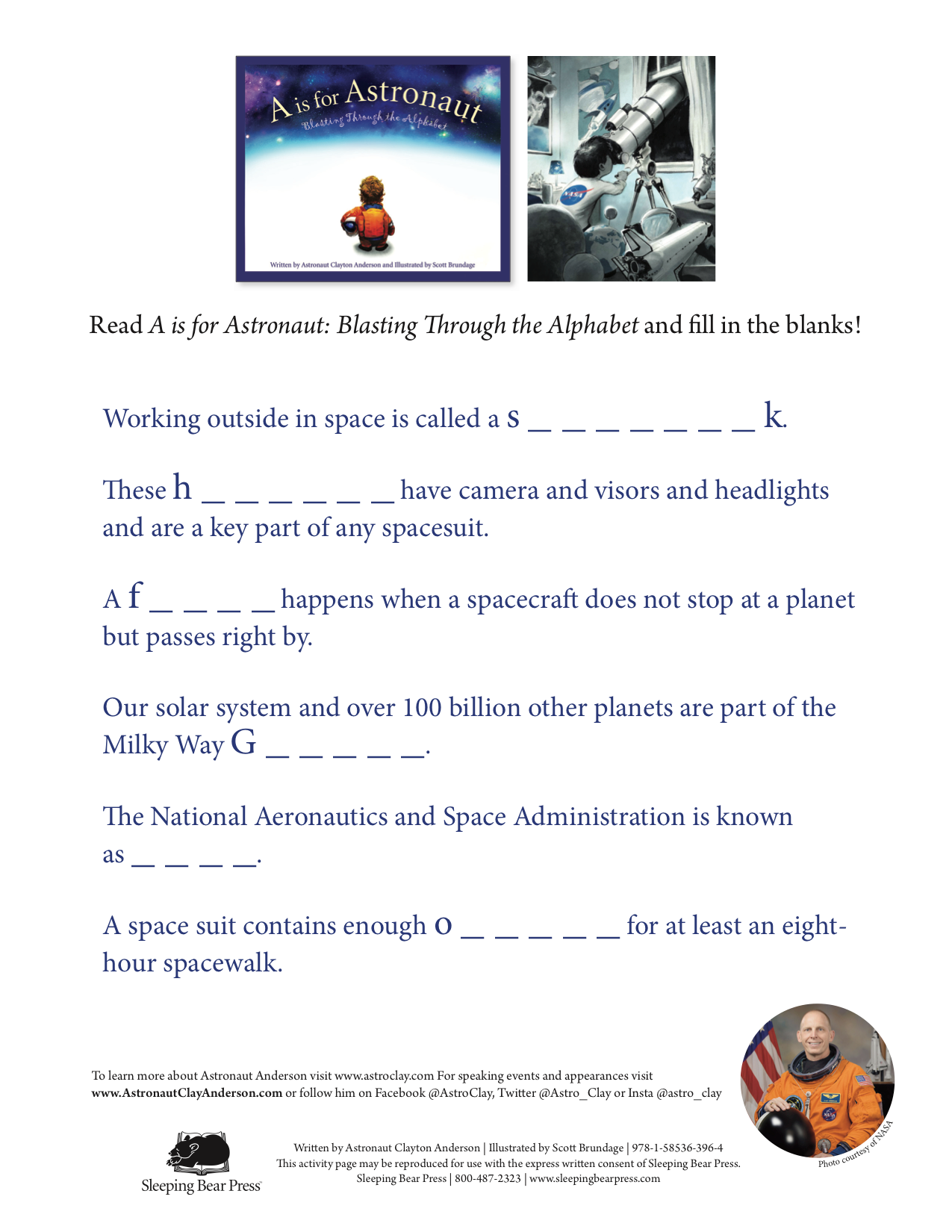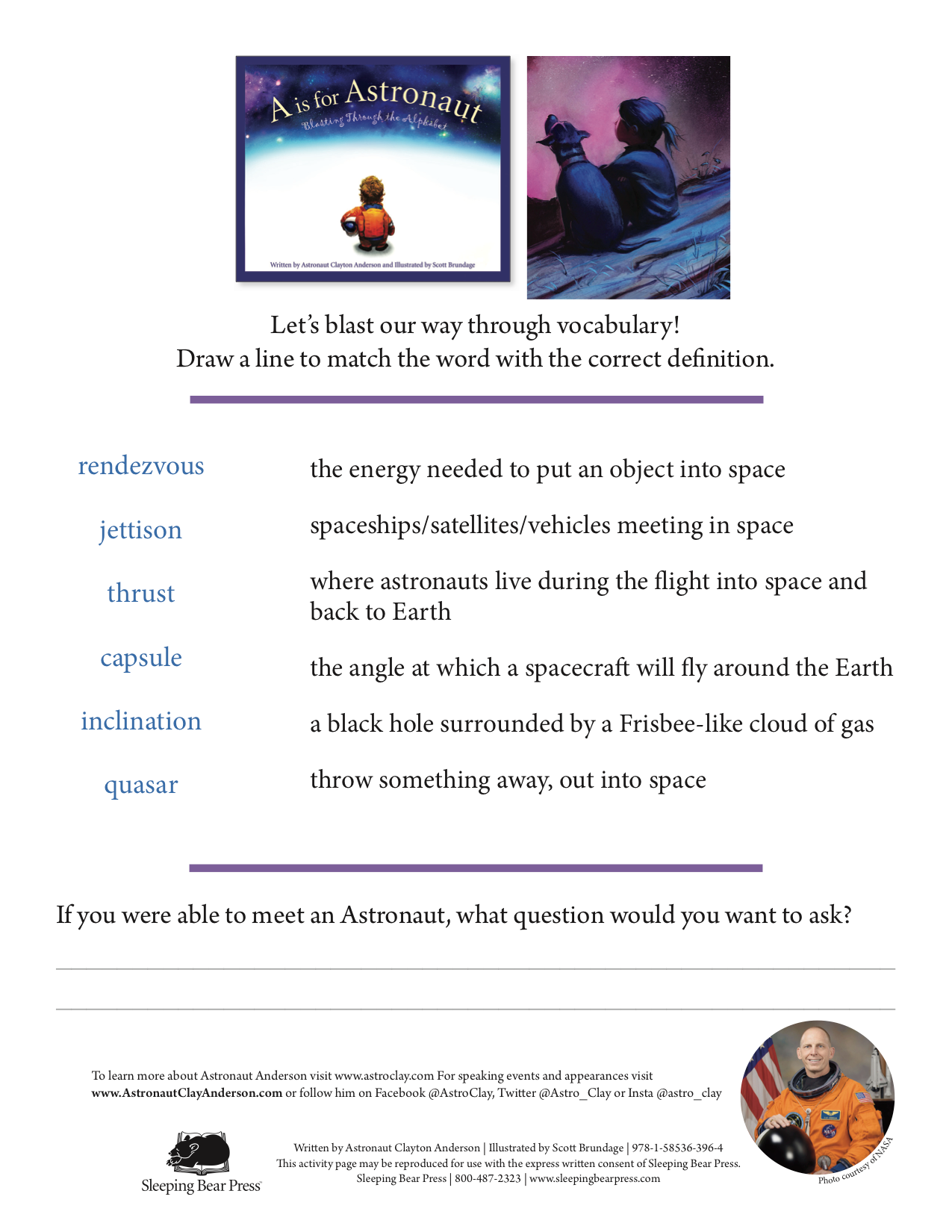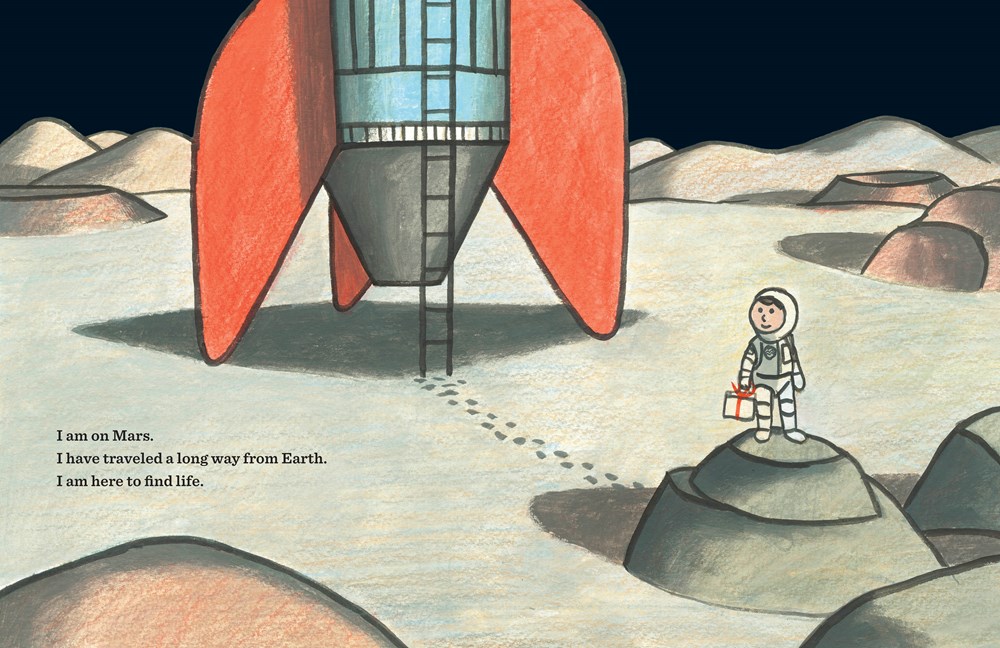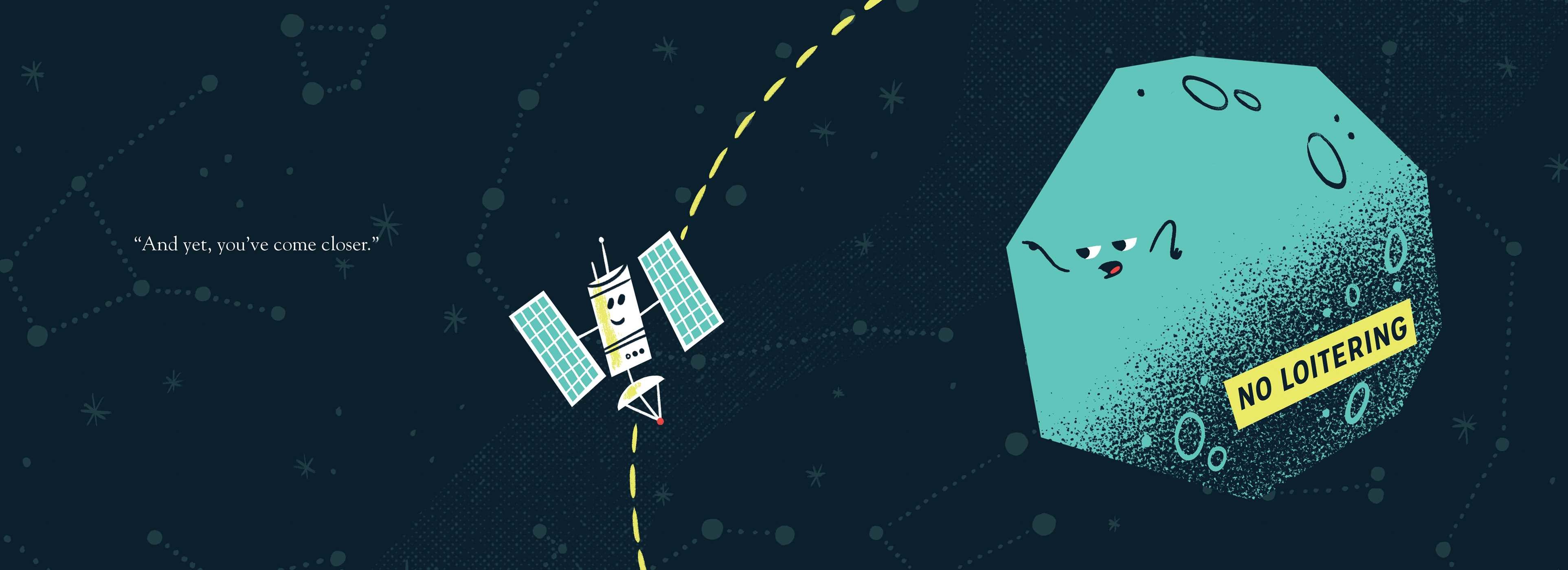About the Holiday
I always love celebrating kids’ creativity, imagination, and smarts and today’s book has all three! If you never want to say goodbye to January’s “Creativity Month” and am looking forward to Expanding Girls’ Horizons in Science and Engineering Month and National Ideas Month in March, then you’ll want to add Sadie Sprocket to your reading list.
Thank you goes to Two Lions and Blue Slip Media for sending me a copy of Sadie Sprocket Builds a Rocket for review consideration. All opinions on the book are my own. I’m also excited to be teaming with them for a giveaway of the book. See details below.
Sadie Sprocket Builds a Rocket
Written by Sue Fliess | Illustrated by Annabel Tempest
Sadie Sprocket wanted to travel. Not your regular vacation kind of travel but the kind that would take her across the galaxy. “So one day Sadie drew a map / to navigate the stars. / ‘It’s time to leave the Earth,’ she said, ‘and travel straight to Mars!’” She chose her crew—a bunny, bear, and owl—and began building her rocket ship with parts she got from the junkyard.
When the rocket was finished, Sadie and her crew were ready to blast off. Her family, friends, and even reporters gathered to see “this space-bound girl with smarts and skill / would soon make history.” They basted off on their journey that would take one hundred days. To pass the time the crew of four tried playing cards, and checkers and chess, but the pieces just floated away, so they read and cooked instead.

Image copyright Annabel Tempest, 2021, text copyright, Sue Fliess, 2021. Courtesy of Two Lions.
Soon, when Sadie looked out the window, Earth was no more than a dot while Mars came into view. When it was time to land, Sadie directed her crew to land on level ground. On the surface of the red planet, they gathered samples and put them into bags and then when they were done, they planted yellow flags. After a few selfies, Sadie knew it was time to go, but a storm blew up and “the rocket wouldn’t budge.”
Sadie, Bear, Bunny, and Owl got out and dug the landing gear free, but when they tried to leave Mars again, the sand swirling in the air was so thick, they couldn’t see. When the storm abated, they thought flying would be a snap, but the rocket didn’t work. Sadie grabbed her tools and they went to work sweeping sand from the circuit board and repairing the wires. Finally, Sadie said, it is “‘time to Blast!’” / They zoomed by stars and asteroids / and made it home at last.” When she landed back on Earth, Sadie learned she “had rocketed to fame,” but one trip was not enough. She now had Neptune in her sights, but clever Sadie Sprocket new she’d “need a bigger rocket.”
Following the text is “Sadie’s Notebook,” which contains facts about Mars and short bios on seven pioneering women in space.
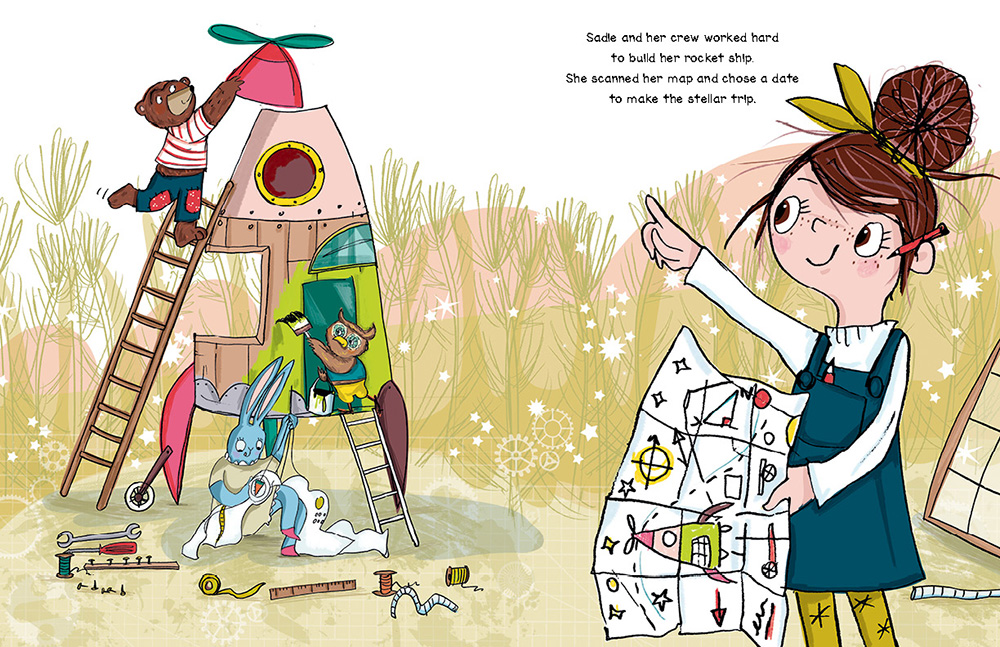
Image copyright Annabel Tempest, 2021, text copyright, Sue Fliess, 2021. Courtesy of Two Lions.
Sue Fliess’s jaunty story about Sadie Sprocket, a young go-getter who doesn’t let things like gravity or obstacles get in the way of her dreams of discovery offers inspirational motivation for children who have big (or smaller) aspirations. Sadie’s confidence in herself and in science jumps off the page as she talks to the press and her supporters at her launch, gathers samples from the surface of Mars, and documents her finds. When the sand storm disrupts her return to Earth, she doesn’t give up the mission, but rallies her crew and fixes the problem. And does Sadie rest on her laurels? Nope! Like any inventive kid, she has her sights set on the next big adventure. Fliess’s pitch-perfect rhymes and quickly paced rhythm make the story an entertaining read aloud.
In her bright, active-packed illustrations, Annabel Tempest gives Sadie a cheery, self-assured look as she studies, makes plans, and builds her rocket. Kids will eagerly follow her steps as she gathers her supplies and gets to work. As Sadie, schematic in hand, directs her crew, kids will have fun seeing how she makes clever use of a wheelbarrow and appreciate the spacesuits and fitted helmets for each crew member. Images of the circuit board will appeal to tech-loving kids, and pictures of the rocket shooting across the galaxy will thrill readers. Any kids looking for inspiration to decorate their rooms will find plenty of ideas here too.
A lively story to encourage creative and science-loving kids, Sadie Sprocket Builds a Rocket is a terrific book for exciting story times and to enhance STEM lessons in school and at home. It is highly recommended for home, school, and public library collections.
Ages 3 – 7
Two Lions, 2021 | ISBN 978-1542018036
Sue Fliess is the author of more than thirty children’s books, including Mrs. Claus Takes the Reins, illustrated by Mark Chambers; Shoes for Me!, A Dress for Me!, and Books for Me!, all illustrated by Mike Laughead; and Let’s Build, illustrated by Miki Sakamoto. She lives with her family and their two dogs in northern Virginia, where they admire the moon, stars, and sometimes even planets from their backyard. You can connect with Sue on www.suefliess.com | Twitter | Facebook | Pinterest
Annabel Tempest is the illustrator of a number of picture books and board books. She holds a degree in fashion and textiles and has worked as a freelance illustrator on everything from maps and packaging to greeting cards and children’s books. She lives in the beautiful Somerset countryside in the UK with her husband and a houseful of muddy boys and dogs. You can connect with Annabel on annabeltempest.com | Instagram | Twitter
Sadie Sprocket Builds a Rocket Giveaway
I’m happy to be teaming with Two Lions and Blue Slip Media in a giveaway of:
- One (1) copy of Sadie Sprocket Builds a Rocket by Sue Fliess | illustrated by Annabel Tempest
To enter:
- Follow Celebrate Picture Books
- Retweet a giveaway tweet
- Bonus: Reply with your favorite planet for extra entry
This giveaway is open from February 4 to January 10 and ends at 8:00 p.m. EST.
A winner will be chosen on January 11.
Prizing provided by Two Lions and Blue Slip Media
Giveaway open to U.S. addresses only. | No Giveaway Accounts
Sadie Sprocket Builds a Rocket Book Tour Activity
Blast off to Mars! Maze
Can you help the rocket navigate its way to Mars in this printable puzzle?
Blast off to Mars! Maze | Blast off to Mars! Solution
You can find Sadie Sprocket Builds a Rocket at these booksellers
Amazon | Barnes & Noble | Books-a-Million
To support your local independent bookstore, order from
Picture Book Review







